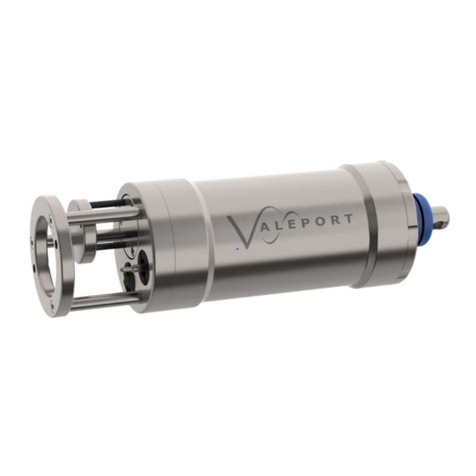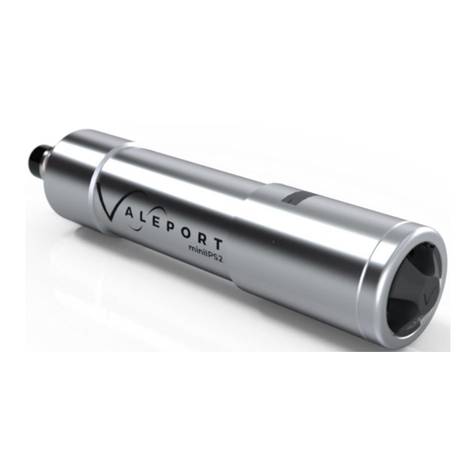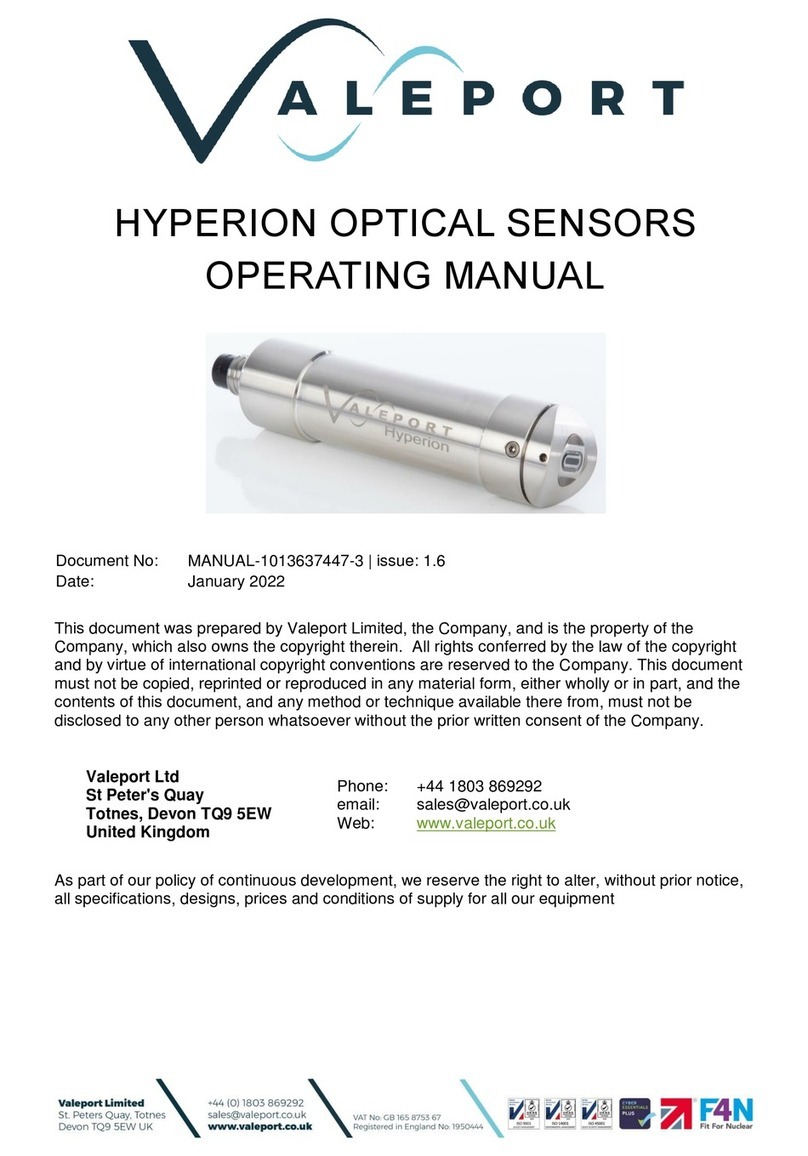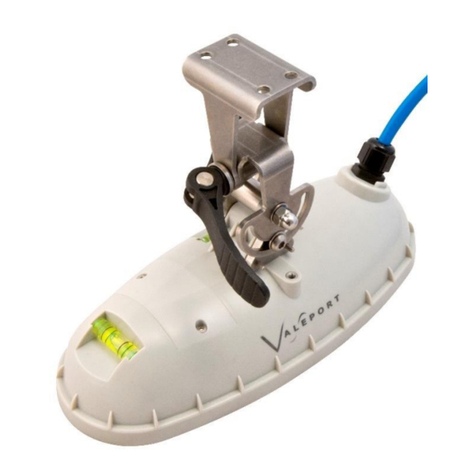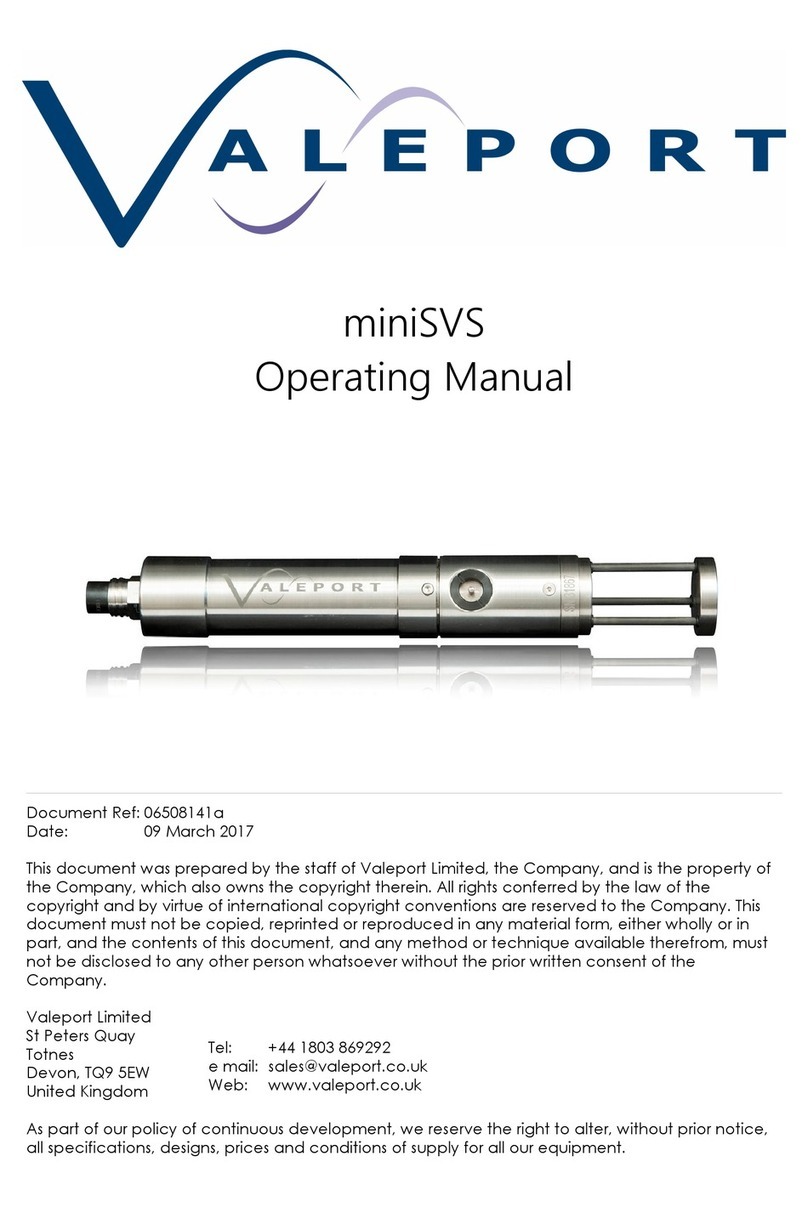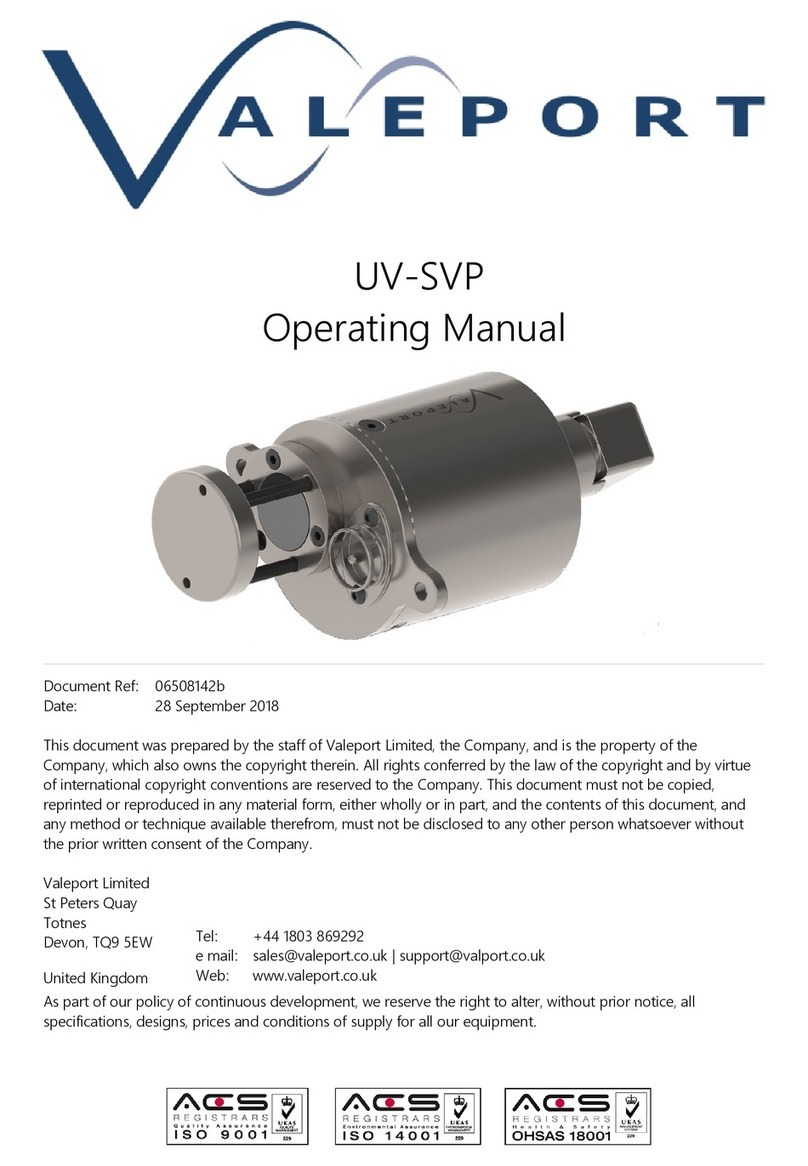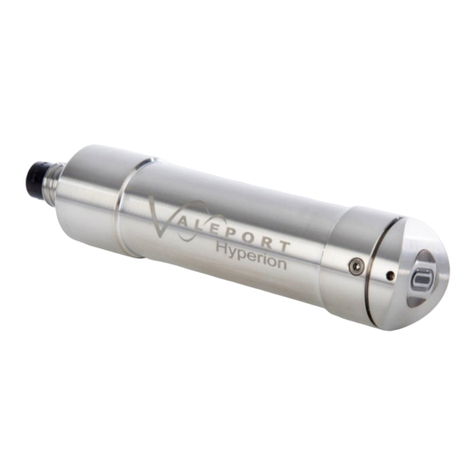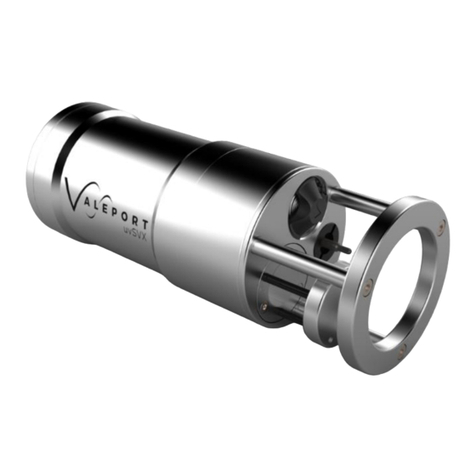© Valeport Limited
miniSVS Operating Manual Page 5 0650808J.doc
Materials:
Main housing Titanium or acetal
Main bulkhead Titanium
Space Rods Carbon Composite
Reflector Assembly Titanium
SV Transducer Ceramic transducer behind polycarbonate window.
Signal cable 3mm co-ax cable, nominal 25cm length. Push fit connector.
Pressure Transducer Stainless steel diaphragm with acetal protective cover.
Temperature sensor PRT in titanium housing with polyurethane backing.
Power:
Requires 8 –29V DC input
miniSVS draws approximately 17mA at 12vDC
miniSVS with pressure draws approximately 24mA at 12vDC
miniSVS with temperature draws approximately 20mA at 12vDC
Output:
Units are fitted with both RS232 and RS485 communications as standard. RS485 is
enabled by grounding a pin in the communications lead (refer to Section 4). Protocol
is 8 data bits, 1 stop bit, no parity, no flow control.
Baud rate is factory set to 19200. User may choose between 2400, 4800, 9600,
19200, 38400, 57600 or 115200. (Note that fast data rates may not be possible with
low baud rates).
Signal Frequency:
Single sound pulse of 2.5MHz frequency.
Update Rate:
Selected by command –Single output or continuous output at one of the following
rates: 1Hz, 2Hz, 4Hz, 8Hz ,16Hz, 32 Hz or 60Hz
.
The fastest rate possible is determined by the combination of sensors fitted:
